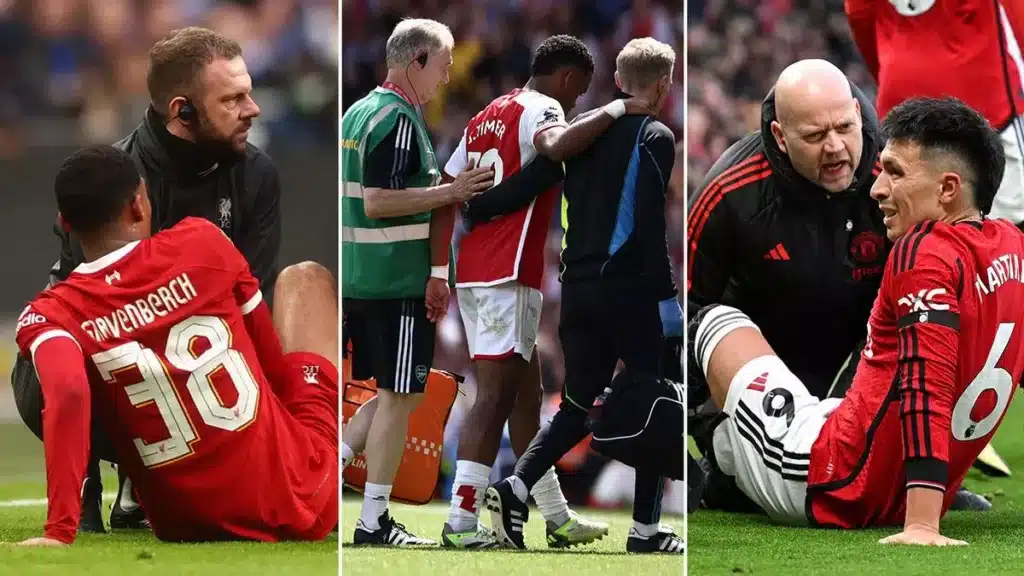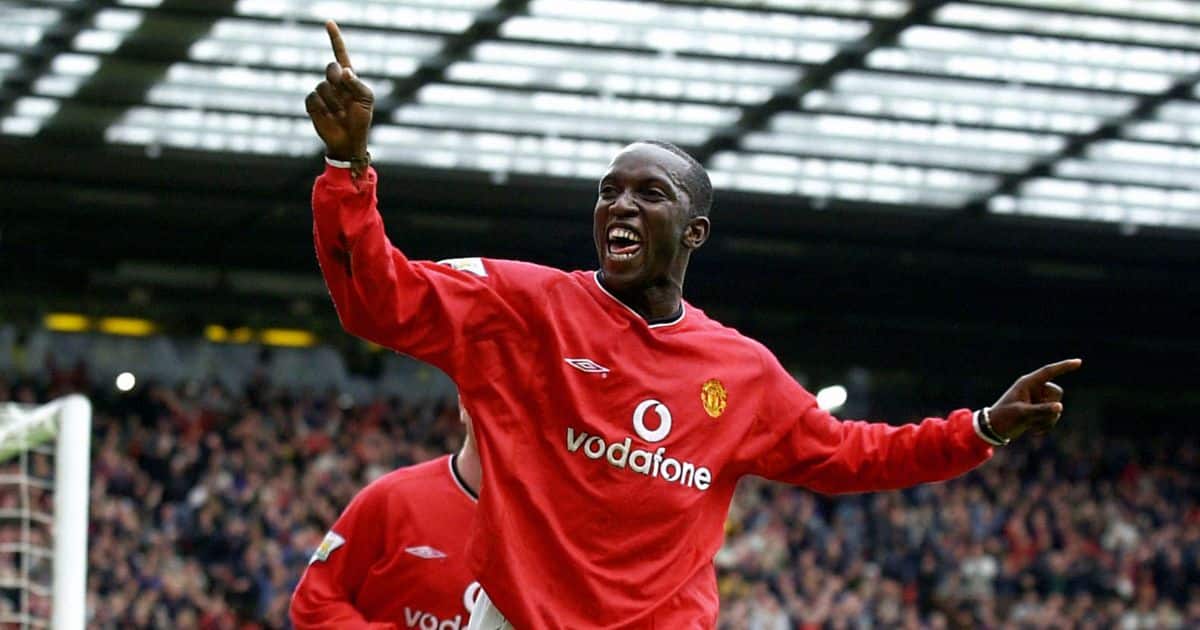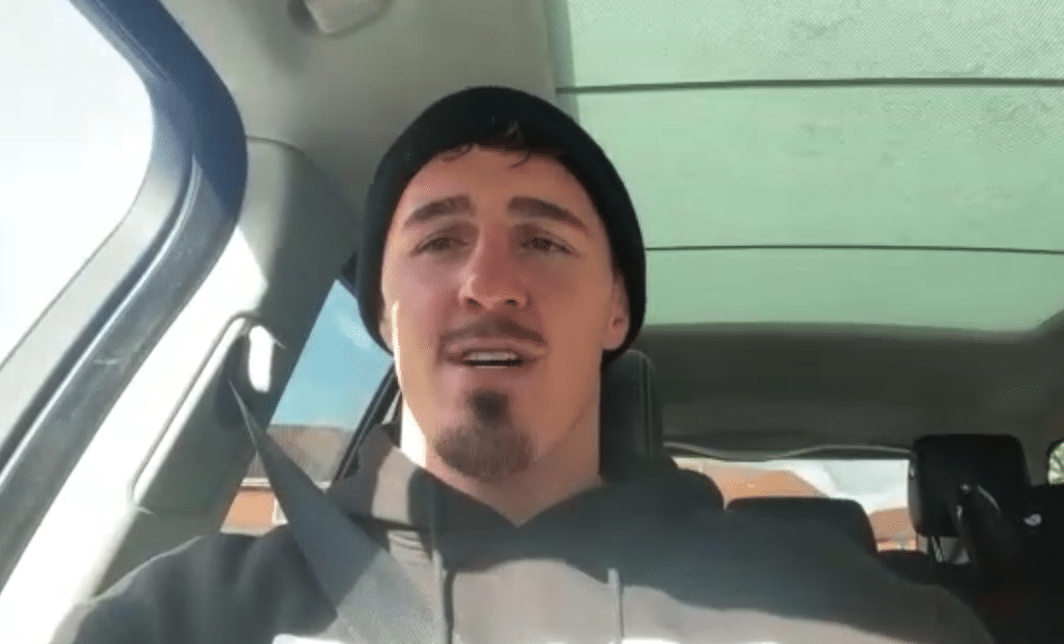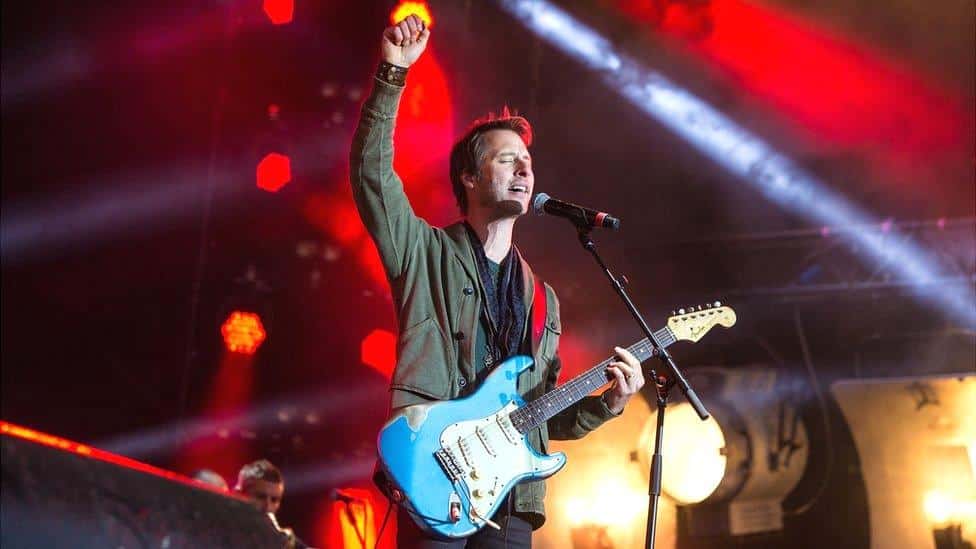
Ben Dinnery is founder of Premier League Injuries. An injury analyst and sports journalist, Ben is highly regarded for his work in providing timely and accurate information about injuries to football players, especially in the English Premier League.
Safestcasinosites.co.uk spoke to Ben exclusively, to get his take on the injury crisis at the top PL clubs, following a second round of international breaks this season.
Interview Highlights:
Man United
- Ten Hag gambled playing injured players due to job pressure mounting
- United’s ‘commercial’ Pre-Season tours a cause of early season injury issues
- United fans shouldn’t expect to see Malacia till 25/26 season
- Mazroui potentially out for a few weeks due to heart palpitations
Arsenal
- Arsenal need to be careful not to turn Martinelli injury into serious issue
- Odegaard expected to return before next int’l break
Liverpool
- Allison’s repetitive hamstring injury should be a concern for Liverpool fans
- Chiesa injuries not an issue for Liverpool, his signing was a ‘no brainer’
Man City
- Rodri could return before end of season but not without risk
- De Bruyne not too far away from return, needs to be carefully integrated
Chelsea
- No need to rush Reece James back into starting line up
Full Transcript
Man United
Q: Erik Ten Hag’s side reported 45 injuries last season. I think it was the highest in the Premier League. They’ve already begun to rack up quite the injury list this season. What would you put that down to?
A: “It’s multifaceted. First and foremost, When you’re trying to manage squads around heavily congested fixture periods and schedules, you have this vicious cycle of players who ordinarily you wouldn’t, in the ideal situation scenario, you wouldn’t like to ordinarily play.
Luke Shaw, by his own admission, Erik (Ten Hag) might hold his hands up and say, look, there were instances when Luke Shaw come back off a hamstring problem. I think one of those was around about three months and he played in a high number of games over a two week period and then suffered another setback on the back of that, and that was down to the fact that he was the only sort of really experienced, orthodox left back.
It’s players you gamble sometimes and that’s the pressure of the job. When results aren’t going your way, you want your best team. You default to those players who you think can maybe carry you through and this sometimes backfires.
Secondly, you’re required then to play players out of position. Even slight formation or tactical tweaks with regards to the movements, the decisions, the directional play, the intensity, all of that impacts on players in different ways. And you have this accumulation of fatigue, you have different stresses on the body, you have different mechanisms around the styles of play and the philosophies. And all of these can contribute to increasing that injury burden and seeing those numbers add up.
I think also as well, there are by admission internally or externally, there are probably decisions that have been made, which have in hindsight, probably seemed a little bit risky and like I say, maybe on another in the cool light of day that would have maybe rested a player or changed things around.
The situation at Manchester United isn’t great. I know internally they’ve done a little bit of a deep dive and try to understand the mechanisms of those, but again, some of those problems seem to be rearing its ugly head again this season, with the likes of Harry Maguire and some of those other long term injuries.”
Q: Do you think there’s any correlation Man United’s long Preseason tours & Ten Hag’s long injury list?
A: “I certainly think the pressures of adhering to commercial partnerships is putting undue pressure on, not just Manchester United, but other clubs.
The research does indicate that the more work that you get done in that pre season program ie..the more sessions you complete in training, the more robust you are for the upcoming season. So that there’s a correlation there. If you’re travelling all over the world, far from corners of the earth, you’re losing time in terms of work on the training pitches. Losing work through the jet lag. I think there’s a few clubs went out to Asia and it was monsoon season, facilities, pitches. The facilities maybe just aren’t up to a level that maybe Premier League players and clubs are typically used to. But because you have those commercial partners in place and used to generate the money for the club.
If you go back to post-pandemic , clubs were choosing to stay and complete their pre seasons in house, locally, working around actually keeping those air miles really down. And we did see the injury burden reduced. But every single day, every session that’s missed, that’s an accumulation and it does count towards the end. I can definitely see and understand why that is impacting on {Man United} players’ fitness.”
Q: Malacia? When do you predict a return for him?
A: “Reintegration in the team needs to be managed very, very carefully.
Your question then is, does that coincide with the return of Luke Shaw? Is he a player who would ordinarily be considered your first choice left back when everybody’s fit? Probably not. His opportunities within that first team and certainly minutes wise are probably going to be limited anyway, just in terms of depending upon the personnel available within that United squad.
Ultimately, do I see Malacia being able to perform regularly at optimum levels in that United first team when everybody else is sort of fit and available on that left hand side? Unfortunately not. It could be that we see him on the fringes of that first team squad, really just getting a feel of being back in that environment and then ultimately getting a really solid preseason under his belt in 25/26 and then really sort of pushing and competing for a spot in that team.”
Q: You would say Malacia won’t be seen this season?
A: “I think he will be gradually integrated. I think we’re probably looking at around about maybe 17 months. I’m sure it was around July last year when we last seen him.
We’re approaching around 15 or 16 months now. Like I say, he could be in and around that first team squad and training with the group and getting that experience, but is he going to be pushing consistently for a start in that first team? Highly unlikely, particularly if you get some of those other players back in that United team.”
Q: On Hojlund. There were reports that he missed a training session over the international break. Do you think Ten Hag needs to be careful rushing him back?
A: “There’s obviously a lot read into these sorts of situations, maybe too much again internally, and there will be an agreement and there will be understandings and there will be individualised training programs and profiles.
Hamstring injuries inherently have huge re -injuries or recurrence rates, particularly within that first 30 days of a return, so you’ve got to be very careful with that situation. Is it going to make a massive amount of difference if Rasmus Hojlund misses one training session to ensure that he is fully recovered? Because, again, we’re coming off a period of absence, being on the sidelines.
He’s involved in international football. The player needs to be managed, fatigue is a huge risk factor associated with hamstring incidents. I think it’s good management on behalf of the national team, because ultimately you need to keep Rasmus Hojlund fit and it’s two fold because it doesn’t make any sense and it doesn’t help anybody if he picks up another setback. Ideally, he’s got minutes under his belt, he’s gained that little bit of fitness and sharpness.
He then goes into this next block of domestic fixtures, performs for Manchester United and then ultimately the national team have got a player who’s in a lot better position to be able to deliver and perform for them come those set of international fixtures in November.”
Q: On Mazraoui. There’s conflicting reports around that he might have to spend some time on the sidelines because of a heart problem. Have you heard about this?
A: “He reported palpitations. He was replaced at half time in a recent outing for Manchester United.
Now in terms of the management of that episode, that it’s certainly nothing untoward in terms of the severity. There’s been a small procedure. They understand to address this, which has been fairly straightforward. And the expectation is we’re just looking at a few weeks on the sidelines, nothing too sinister, procedures which are fairly sort of routine and run of the mill. And again something more just to be aware of that needed to be addressed, but nothing to be overly concerned about.”
Arsenal
Q: What would you say is likely return time for Martinelli?
A: “There was an MRI scan on that calf because of the slight bit of swelling and a little bit of pain within that.
What we would say is typically if it was something that was very mild and it was a a grade one. Something very small, we could easily just be looking at a seven-10 day return to play for Martinelli. If it was something a little bit more sinister and severe, we would certainly be looking more towards the back end of October and early November. The assumption is that we think Bukayo Saka is going to be okay. You’ve got Leandro Trossard, who’s been in decent nick. You’ve got Gabriel Jesus, who’s been in and around the squad. Now you’ve got Kai Havertz. I know that issue with his knee, he should be okay. So there are players all vying for places in those positions.
And if you do need to err on the side of caution, it’s easy to turn a minor issue, which is a seven-10 day problem into a three or four week injury if you push it too hard and tear that muscle even further. So at this moment in time, nothing to suggest it’s too serious. The Arsenal medical team may want to consider and look at that a little bit more, and they will look at the results of that injury that has taken place. But again, just look at his minutes over this period and Mikel Arterta can make his decision based on all of those factors and conversations with the players and with the medical team on his return. But I can say hopefully nothing too serious with regards to that.”
Q: On Odegaard? Is there any update that would delight Arsenal fans?
A: “We’ve seen Odegaard running on the Alter G treadmill, which is a positive step.
It shows that he’s progressing through that recovery and rehab period fairly well. By his own admission, Mikel Arteta said that he was slightly ahead of schedule, that calm boot removed. Probably be a little bit quicker. There’s always a little bit of smoke and mirrors with regards to players and returns and particularly, I don’t think the apple falls far from the tree when we talk about Arteta and Pep Guardiola, he’s had a good teacher with him.
They’re going to play their cards very close to the chest. But for me, I think there were initial concerns that we were looking at something that could have been fairly substantial and lengthy. I think the prognosis was probably slightly better and certainly where we’re at now in terms of that level of progression. I would be fairly optimistic, confident that we’re looking at a return before the next international break.
If Arsenal are able to maintain that push, that then eases the pressure on Mikel Arteta having to make those decisions to potentially rush the likes of Martin Odegaard back. If Arsenal are going out and they’re picking up three points week in and week out and they’re putting in good performances and they’re looking good and comfortable, then they might leave Odegaard on the bench. There is no need, they can give him another week.”
Liverpool
Q: On Alisson. He spent 15 games out last season with a hamstring issue. He seems to have picked up a similar issue. Is this worrying signs for Liverpool fans?
A: “The two biggest risk factors when we’re talking about injury incidents are fatigue. And then two is history.
If you have a clear pattern of injuries, then the chances of you picking up another injury in that similar area is quite high. And we know that the sensitivities around hamstring problems are increased. Alisson has suffered around about four, possibly even five hamstring related injuries over the last 14 to 15 months. That is a slight worry and a concern with regards to that. It’s something that you do need to be aware of.
Alisson was coming off the back of a minor sort of hamstring issue niggle prior to this latest setback. He’s in that red zone, into that bit where he’s most at risk within that period of just returning. That is a slight worry and a concern.”
Q: On Mac Allister. What chances would you give of Mac Allister playing against Chelsea this weekend?
A: “This is an adductor, groin issue and it certainly isn’t anything new and we’ve seen it rear its ugly head during the last international break.
There are minor knocks and ailments and issues and complaints, and just given the very nature of the type of football, the movements, those dynamic switches, those explosive changes of directions, kicking mechanisms, those are the adductor problems, the groin issues, sports hernias, they’re all commonplace.
I think we’ve seen with Enzo Fernandez last season at Chelsea, he played with an underlying groin problem up until the point where it sort of became that sunk loss fallacy, you invest so much in and how long can you go on for? How much is it affecting the way I perform on the pitch and how much is it actually detracting from what I can deliver?
With Mac Allister this has been dragging on a little bit now. There’s obviously management between games in terms of his training load. However, what we’ve seen on the pitch when he is playing, he is being able to deliver those high quality optimum levels of performance, he’s still giving out 8.5 and 9s and I suppose while he’s able to do that, and while he’s able to train, albeit with there may be some tailored decisions around his training load, it’s something hopefully he can manage throughout.
If it’s something that continues more long term, then it may be something that needs to be addressed surgically. But for now he’s back in training, it just seems to be more of that management issue.”
Q: What do you make of injury prone Chiesa signing?
A: “I think his arrival was more of a management issue. Coming from a player who hadn’t had a lot of minutes competitively, he obviously had some well documented injury issues as well.
You have potentially a player who was touted as being in and around that £70-80million mark to pin them up for really what could be a song. Seems like a little bit of a no brainer. Is Federico Chiesa a player that you will need to rely on to perform week in and week out, two and three games a week? No. In that Liverpool attack, you’ve got your Nunez, Diaz, Salah, Gakpo, Jota. All of those players. So Chiesa can come in and feed in and feed out of that team, the demands and the pressure aren’t as such that he needs to be 100% for every single game.
I think for me, I think he’s quite an astute signing. You’ve got somebody who undoubtedly has that level of talent and that quality and you have him in a team where he can afford to be managed carefully and not really thrusted into too many situations that are going to put him at risk of suffering major injury setbacks on a regular basis. So I think for that reason alone it was a little bit of a snip and for the price, it’s a no brainer.”
Man City
Q: Is there any chance of Rodri making an appearance before the end of the season?
A: “I would never say never.
I’ve got examples of players returning from ACL injuries within a 100 day period. Obviously the exception rather than none, Roberto Baggio was back on the pitch playing within about 87 days. But he was aiming for World Cups and he was coming to the latter end of his career.
What I would say is any return within that nine month period doesn’t come without inherent risk. If you look at some levels of research, any return within nine months carries a significant risk of re-injury or recurrence. Once you go past that nine month period, then that risk reduces by 51% week on week. So, I would never say never, but realistically it makes a lot of sense for Rodri to go through that recovery process and really spend next summer, that pre season program getting ready for 25/26.”
Q: On De Bruyne. Any update?
A: “He shouldn’t be too far away.
I think De Bruyne is a player who’s had several sort of high profile injury setbacks in recent times. The rigors and the intensity of the Premier Leagues are fairly unique and the demands that it puts on. He’s already excused himself from the next set of international fixtures as well, just in terms of being able to sort of manage his body.
His importance to that Manchester City team, it can’t be questioned. Can Pep afford again to introduce him? He’s got to very carefully integrate him and manage him. Manchester City have done it on several occasions before they’ve showed that they can go out, they can still get results. They’re still one of the best teams in the world with or without Kevin De Bruyne in that starting XI.”
Chelsea
Q: Chelsea had the second highest injury time lost behind Man United last season under Pochettino. Now they’ve only got two long term injuries in the squad. What do you think’s changed under Maresca?
A: “There were probably elements of mismanagement, decisions, which you’d probably look back on and tried to avoid that risk, the pressures of results, the pressures of new managers and new players wanting to perform.
That vicious cycle of utilising players in slightly different positions and there’s different formations and different setups and and all of these things culminating together again. There were a lot of well documented issues with regards to high profile members of the backroom staff, members who had a lot of years within the club, there’s been a high turnover of staff behind the scenes.
We saw it particularly with Chelsea when it went from Lampard to Tuchel to Potter. The injury burden on manager on manager just kept on increasing and increasing. And that was just more because of that unsettled nature.”
Q: On Reece James. Any positive news for Chelsea fans?
A: “Positive news. On the training pitches, that’s always a good sign.
Caution with regards to a return to training is not a return to play. And we’ve seen Reece James on the training pitches several times recently and unfortunately, he’s suffered setbacks, but he’s moving in the right direction which is great. I would always err on the side of caution with regards to that. I just think Chelsea as well are in a position now where they’re getting a little bit momentum, they’re gaining some form.
The pressures aren’t necessarily there for Maresca to force the club captain straight back on that pitch. He can afford to manage him a little bit more and integrate him slowly. And hopefully as you’re building up that load, then you’re going to get Reece James in a position where he’s starting games regularly and he’s gradually increasing those minutes. Hopefully that’s going to stand him in good stead for the remainder of the campaign.”



